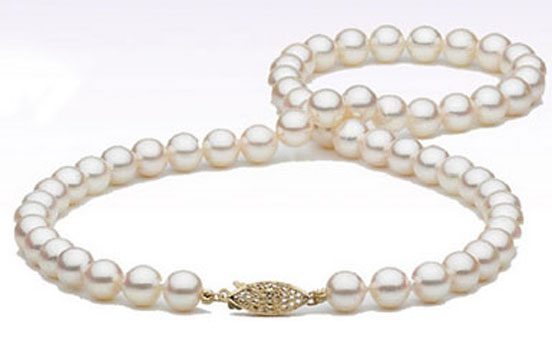How Pearls Are Added to a Necklace
- By Patti Dechter
- Aug 16, 2022

Count and Cut
The process begins by taking careful inventory by counting all the pearls and noting any special characteristics surrounding the pearls or chain before any work is done. Then, the silk thread is gently removed separating the pearls from the chain so the drill holes are clearly visible for further review.

Size Grading
Each pearl is individually measured to optimize its ideal place in the necklace. Pearl professionals recognize slight color, size and shape differences to determine which pearls look best next to their neighboring pearls. Most strands of pearls are created in one of two ways, either uniform – being all the same size – or graduated. Graduated pearls have obvious size variation and are strung to achieve a graduated look with the largest pearls in the center tapering down to the smallest pearls towards the back of the necklace closest to the clasp. Any particular strand of pearls includes an acceptable slight variance of sizes usually within a half millimeter. Granted a half millimeter is barely noticeable, but when you have a 5mm pearl next to a 5.5mm pearl, the difference is visible. An experienced pearl stringer will ensure your pearls are strung in the proper positions to maximize their beauty. The result of having your pearls size graded by a pro is a stunningly beautiful necklace and it distinguishes fine jewelry from a Do-it-Yourself strand of pearls.

Thread Selection
Just as there are many sizes of pearls, there are many different sizes of drill holes which all require different thread sizes. An experienced pearl stringer knows how to choose the thread to best fit the drill holes. One size doesn’t fit all! In addition, choosing the correct thread size ensures the pearls will hang naturally and always look their best.

Knotting
Knotting between each pearl is a sign of fine quality jewelry. It takes extra time, skill and tools to do well and results in a more beautiful strand of pearls. Knotting enables most of the pearls’ surface to show for the best visual appeal and provides more fluidity to the strand so your necklace will hang more gracefully. Individually knotting between pearls is an important step in the stringing process for practical purposes, too. Knotting separates the pearls to prevent rubbing against each other which could cause damage or abrasion to their delicate outer layers. The other reason for knotting is to ensure that at most only one pearl could fall off if the entire necklace comes apart – a risk you don’t want to take!

Time to Connect
Once the pearls have been strung, the ends of the silk thread are tied and secured to the last link of the chain so the silk is barely visible.

Cut Once Count Twice
Once all your pearls have been securely reattached, the pearls are counted again and carefully examined to ensure quality standards have been met. After further inspection, your pearls will be wrapped in protective tissue and sent back to you to enjoy for many years to come!













